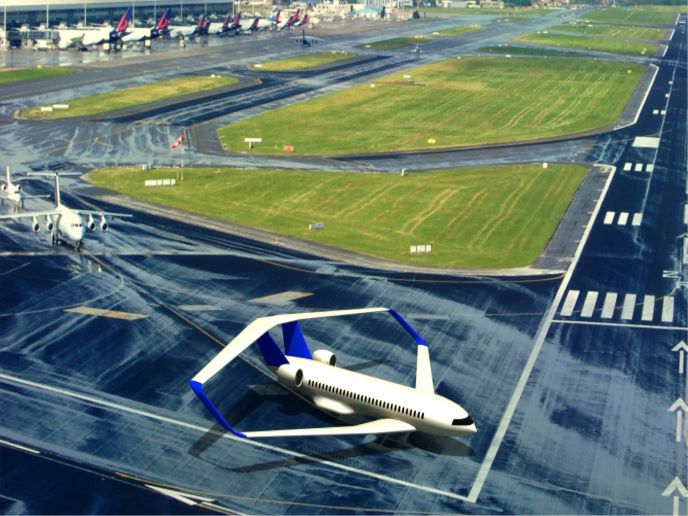New processes help repair damaged composite airframes
Many people might imagine that commercial aircraft structures would be 100 % metal. Yet, in the latest passenger aircraft, including the Airbus A350 and Boeing B787, substantial parts of the airframes consist of composite materials. The parts include wings, fuselages and control surfaces. The main material is carbon fibre reinforced plastics (CFRPs), use of which makes an aircraft lighter and stronger. Aircraft suffer routine damage. The problem is that CFRP parts may be difficult to repair. The material is also complicated to assess for when repair is necessary. A particular problem is delamination due to impact. Difficulty repairing aircraft parts leads to longer delays and higher costs.
New processes
The EU-funded NEWCORT project developed new methods for repairing CFRPs and associated instruments for repair implementation. One developed process homogeneously heats and polymerises new types of resin around complex curved shapes, and cures at 120-140 °C. The process also involves advanced techniques for material removal and surface preparation, extending the ability to patch CFRPs. “The most interesting result has been our AdaptHeat methodology,” explains George Kanterakis, project coordinator, “namely, a set of equipment and processes that enable the appropriate curing of complex structures.” Curing polymeric resins means toughening or hardening the material. A key factor is temperature control, as the material is very sensitive to minor variations. A small deviation can affect the final material strength.
Training and seminars
Building on the innovative physical repair processes, NEWCORT also supported a professional development series of seminars(opens in new window). These focus on bonded composite repairs and thermal transfer modes, plus their applicability to aircraft structures. Participants get the latest research results, from both NEWCORT and the broader academic community. The seminar series also offers participants practical examples and demonstrations, plus the opportunity for hands-on participation. Attendees are therefore equipped with a full understanding of the new processes, and will be able to apply them safely even on safety critical structures. The main clients for the innovative repair processes will be airlines and maintenance repair overhaul centres. Thanks to NEWCORT developments, such businesses will be able to increase their range of composite repair applications. Additionally, the new processes will help reduce the time needed for repairs, especially thermal surveys and preparations. The project faced a few challenges. “One was the problem of not being too theoretical for our end-users, while maintaining the breakthrough character of the solutions,” notes Kanterakis. “Thanks to a long iterative process, with the support of our end-users around the world, we are confident that our R&D results can now enter aircraft hangars.” He attributes the success to close collaboration among multidisciplinary teams having different backgrounds and specialties. Researchers have already started an intensive dissemination and exploitation campaign, which will continue over the coming years. The NEWCORT project yielded innovative processes for repairing composite airframe parts and technical training in how to use them. The new processes reduce repair costs. They should also help keep the newest, most efficient aircraft in service for a long time.







